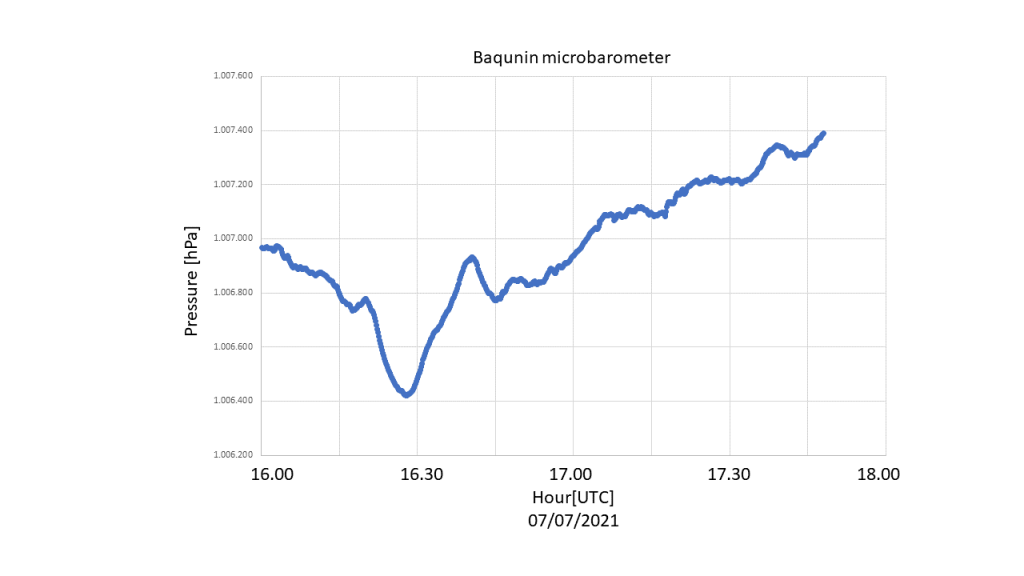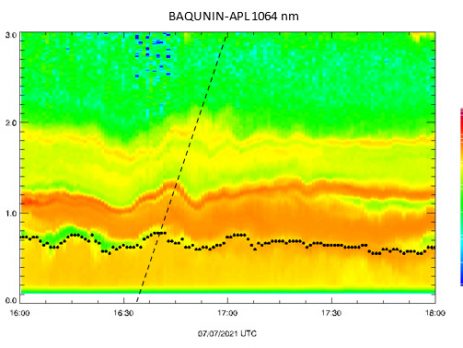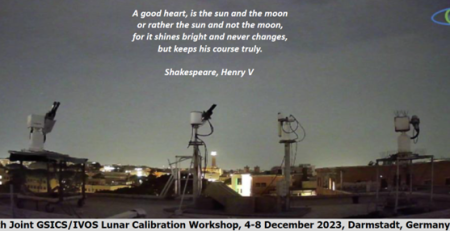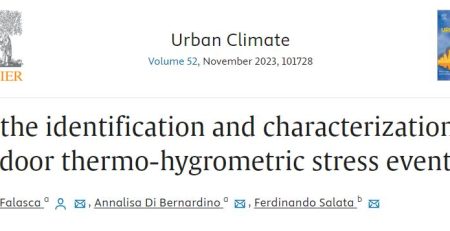A solitary wave at APL site
Solitary waves are a form of internal gravity wave that derives from the balance between the effect of dispersion and non-linearities. They appear in the observation as a pulse in the vertical velocity moving horizontally without significant amplitude decrease. The wave sources (e.g., interaction of the flow with orographic barriers or fronts) may be at large distance from the observation point.
A classical weakly non-linear theory (Rottman and Einaudi, 1993) is used for retrieving the characteristics of solitary waves propagating in a waveguide, in which the background stratification and shear vary as a function of height. The waveguide’s lower boundary is usually the surface; the upper boundary can be the level of a change in the buoyancy frequency from high to low value and viceversa, or the tropopause. In the latter case the wave fills all the troposphere.
Aerosol is the target for Rayleigh Lidar observations. When a solitary wave travels through an aerosol layer produces a vertical displacement of the layer’s boundaries that appears in the LIDAR signal (Figure 1). The LIDAR can detect the transit of a solitary wave inside its field of view only if aerosol is layered.
The transit of a solitary wave produces a pulse in the time evolution of the surface atmospheric pressure (Figure 2), synchronized with the LIDAR detection.
REF: Rottman J.W and F. Einaudi, Solitary Waves in the Atmosphere, J. Atmos. Sci., Vol. 50, N.14, 2116-2136, 1993

Figure 1. Plot of the RAP Range Corrected Signal in arbitrary units. Black dots are the Mixing Layer heights. The dashed line connects the ridges of the wave at different altitudes

Figure 2. Time evolution of the surface atmospheric pressure, synchronized with the LIDAR detection.

















